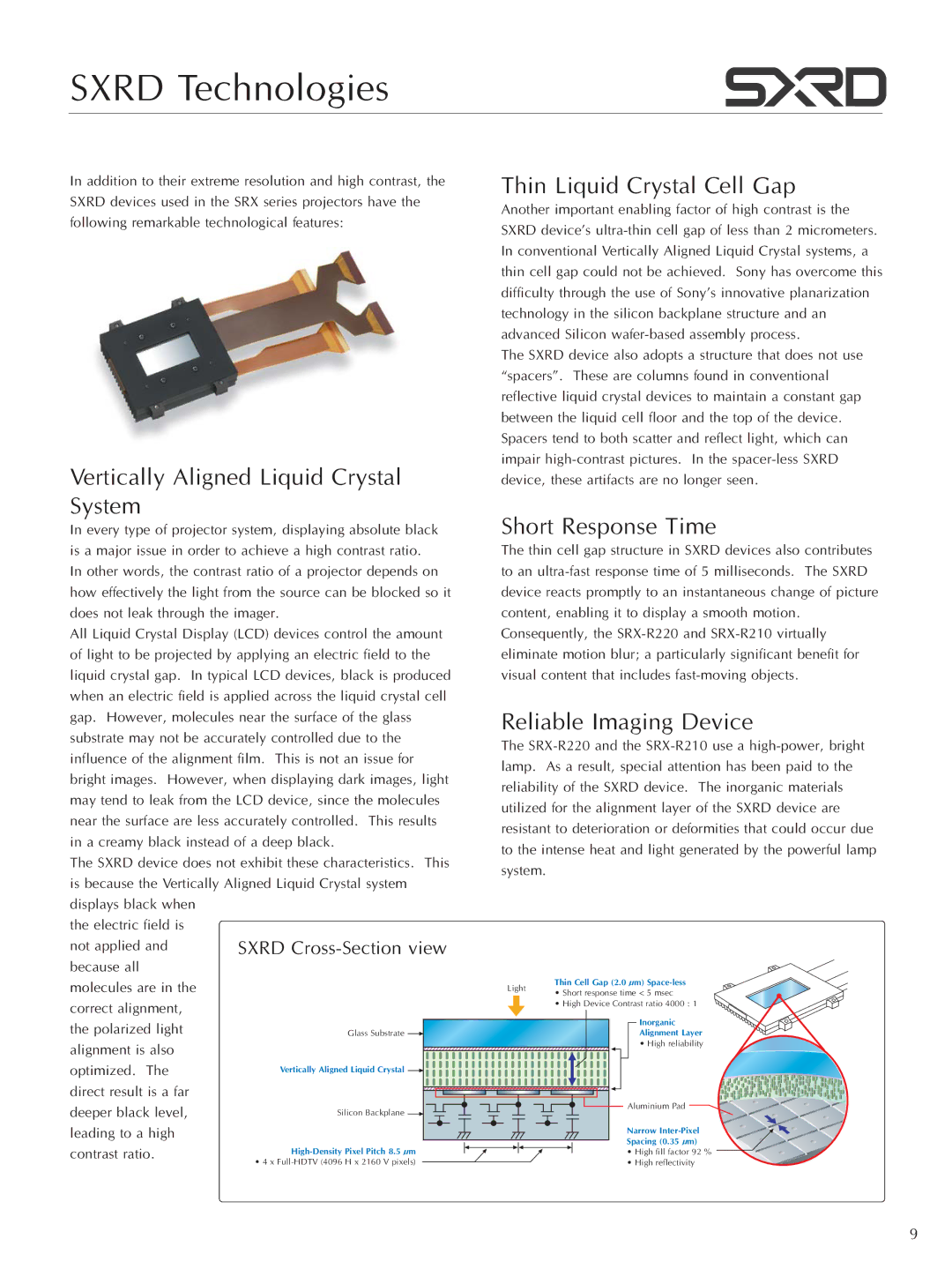LMT-100, SRX-R210, SRX-R220, LSM-100 specifications
Sony has been at the forefront of professional imaging and presentation systems, and its lineup of projectors and capture devices reflects its commitment to innovation and quality. Among the noteworthy products are the Sony LSM-100, SRX-R220, SRX-R210, and LMT-100, each embodying unique features and technologies designed for various applications.The Sony LSM-100 is a powerful imaging solution tailored for live events and presentations. This device is known for its renowned Live Streaming capabilities, allowing users to share high-definition content seamlessly. The LSM-100 boasts a user-friendly interface, making it easy for operators to switch between multiple sources and enhance the viewer's experience. Its lightweight design and compact form make it ideal for mobile setups, while the integrated HDMI and SDI inputs enable compatibility with a wide range of devices.
Meanwhile, the SRX-R220 and SRX-R210 projectors are optimized for large venues, such as theaters and auditoriums. Both models utilize advanced SXRD technology, which delivers exceptional color accuracy and contrast. The SRX-R220 features a high brightness of 20,000 lumens, making it suitable for daylight applications and large screen projections. Its advanced lens architecture allows for flexibility in installation, enabling it to project images at varying distances without compromising quality. The SRX-R210, while slightly lower in brightness at 15,000 lumens, still offers impressive image performance, making it a cost-effective solution for similar environments.
Both projectors support 4K resolution, ensuring stunning detail and clarity. They are equipped with sophisticated processing technologies, such as Reality Creation, which upscales lower-resolution content to near-4K quality, enhancing the overall viewing experience.
The LMT-100, on the other hand, is designed for content management and distribution. It serves as a powerful tool for scheduling and displaying media in professional environments. With an intuitive interface, users can easily create playlists and manage content across multiple displays. Its compatibility with various media formats means that it can be used across a wide range of applications, from corporate events to educational settings.
In summary, Sony's LSM-100, SRX-R220, SRX-R210, and LMT-100 exemplify the company's dedication to delivering high-quality imaging solutions, combining advanced technologies and user-friendly designs to meet the diverse needs of modern presentations and events.

